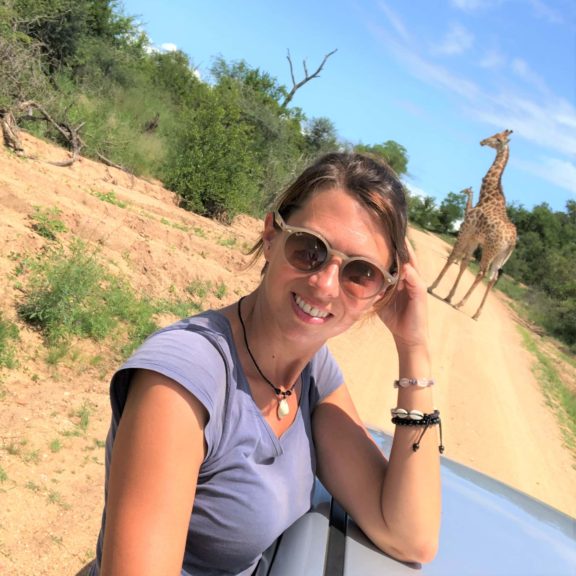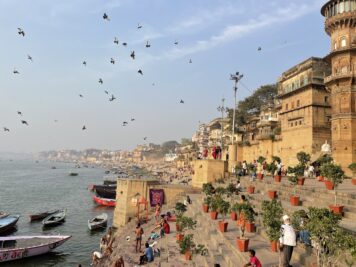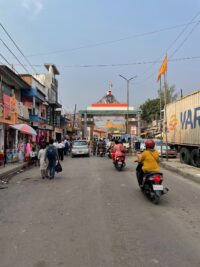Besides staging a trip into the nearby Sundarbans National Park, there is another good reason to stay in Khulna for a day or two. It’s very close to Bagerhat, a small town with a big collection of medieval mosques, easily reachable by bus for a daytrip.
I went over to the bus stand early one morning. All the bus conductors caught sight of me instantly and shouted destinations. Getting on the first bus heading in the direction of Bagerhat, I hopped out when I recognised a particular mosque up ahead.
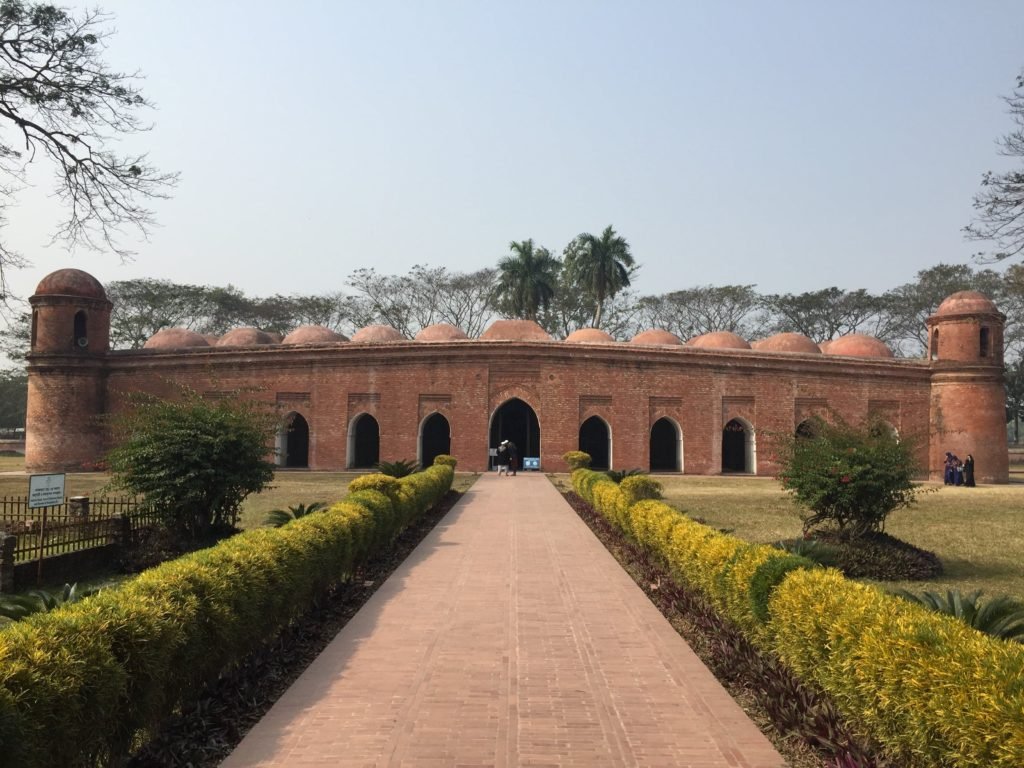
A Bangladeshi saint named Khan Jahan Ali commissioned the Shait Gumbad Mosque in the 15th century and the rest is history.
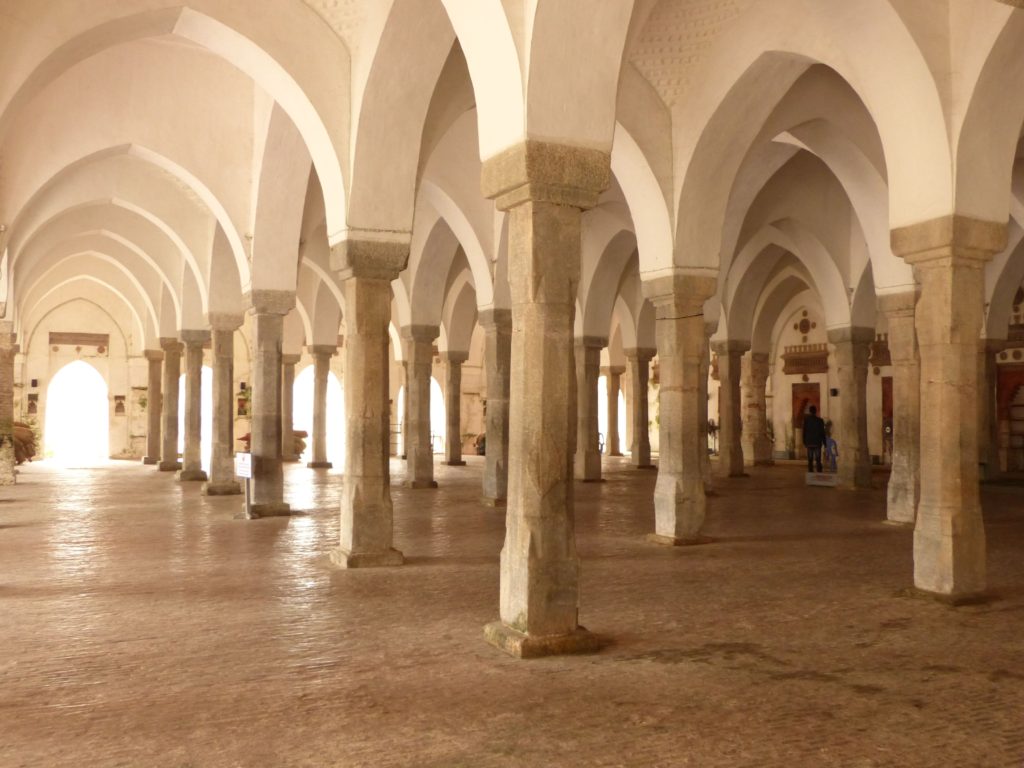
The mosque, whose name means ‘Temple with 60 Domes’ (even though it actually has 81 domes), is the largest traditional mosque in the country.
I noticed this sign in the grounds:
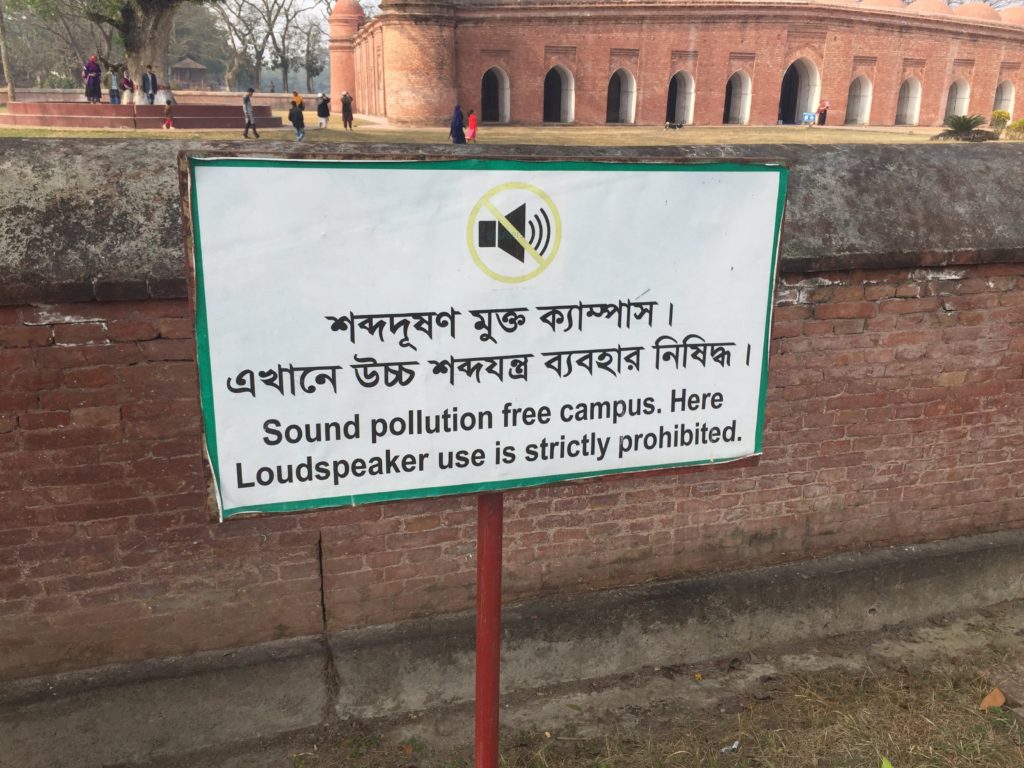
I could only wish the same rule applied anywhere else in Bangladesh. Like at my hotel, for example. But it made me laugh: thinking about all those times I’d been out and about with my own loudspeaker, only to put it away in disappointment after spotting a sign like this.
Plenty of other ancient mosques and mausoleums dot the surrounding countryside. Most importantly, there’s the tomb of Khan Jahan Ali himself.
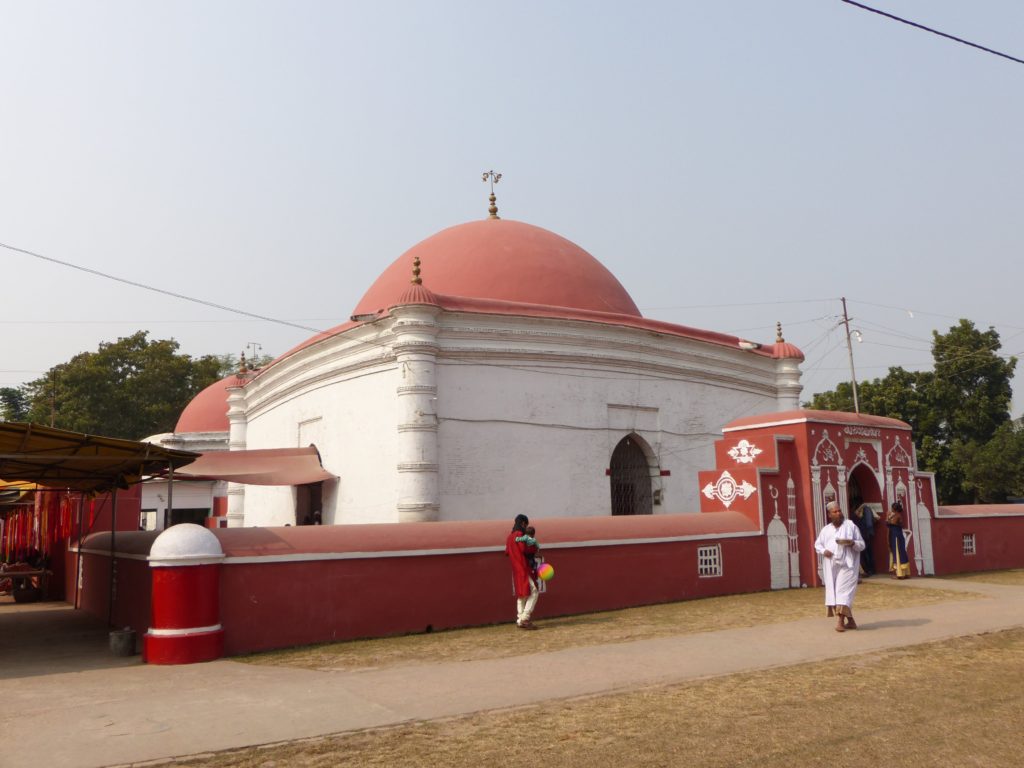
Women aren’t allowed to enter the mosque on the Khan’s tomb complex – but that didn’t stop the caretaker asking me for a donation, even as he turned me away from the door.
There’s also a pond in the complex. It was once home to two venerated centenarian crocodiles. Pilgrims visiting the site were encouraged to feed the crocs live chickens.
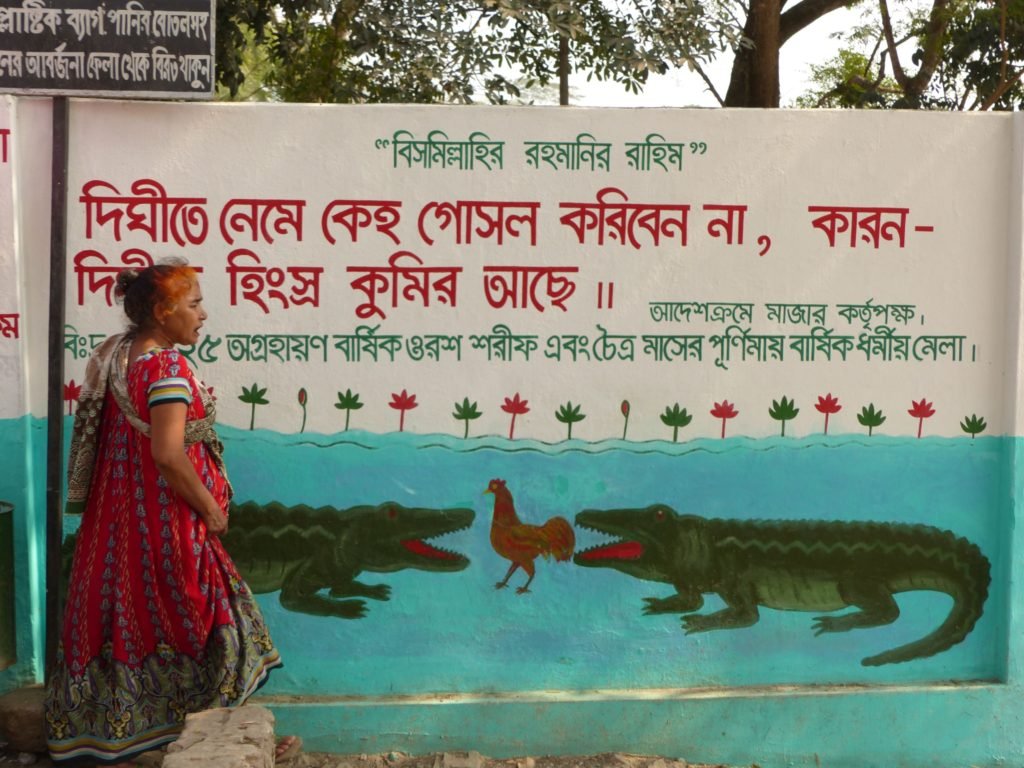
Poultry dinners notwithstanding, the crocodiles eventually died and were replaced. The new ones are supposed to be aggressive but nobody seems to mind hanging out pondside anyway.
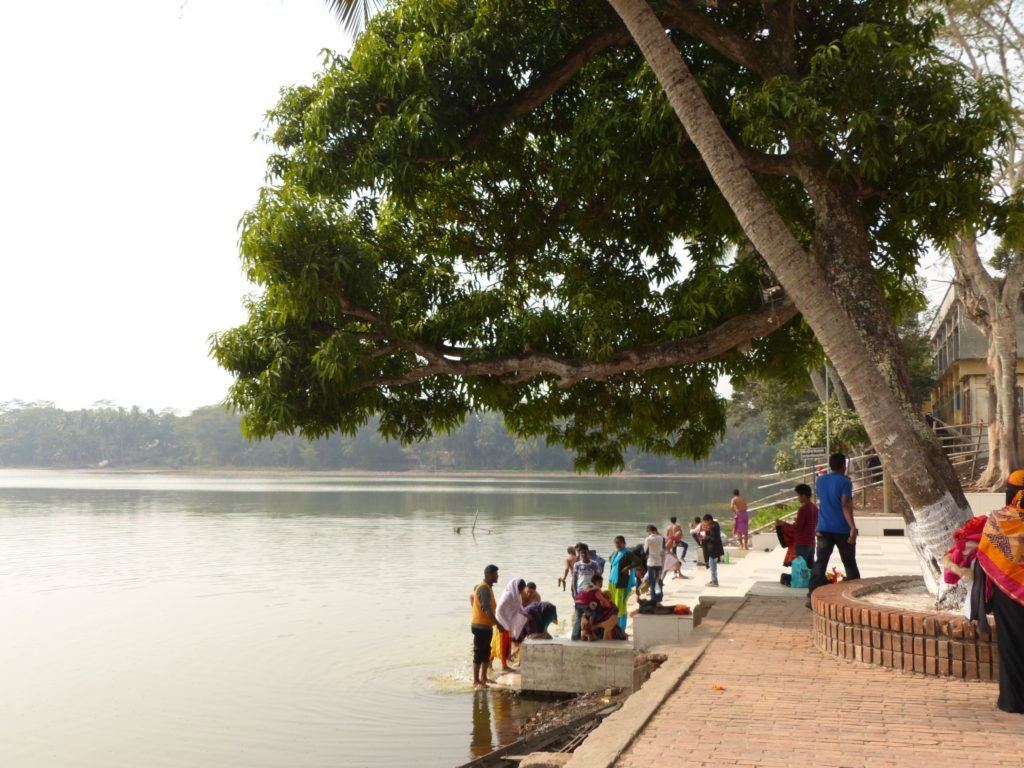
The skin of one of the legendary reptiles is on display in a little museum. I waited to snap a photo while locals took selfies with it (and then asked for selfies with me. What a day at the museum).
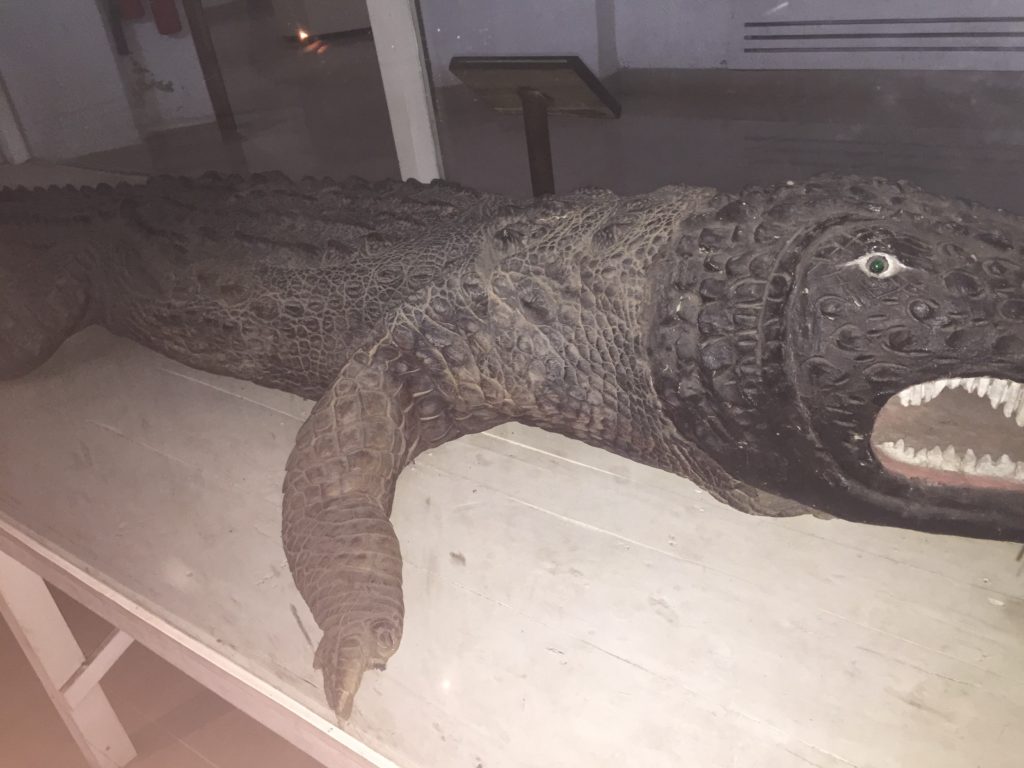
Riding the bus back to town, I thought about my options for moving on. Nobody seems to know it, but there’s a lot to see and do in Bangladesh. I kept thinking about Sylhet Division, an area full of rolling green hills and tea plantations, a different landscape from the flattened rice paddies and fish-farmlands I’d seen so far.
So I took a night train to the capital of the Sylhet Division, a town by the same name. Arriving at the station after nearly 20 hours of travel, I hired a cycle-rickshaw to take me over the steep bridge and into town. This is a great way to feel obese: the drivers usually can’t make it without help. When the rickshaw approaches the bottom of the bridge, runners (usually incredibly skinny old men) appear from nowhere. One of them will step behind the rickshaw and run, pushing it up the bridge. At the crest he drops away – but not until he’s collected a tiny fee (like ten cents) from the driver.
I was planning to take a break from all the mosques and mausoleums and focus on tea and the pretty nature instead. But it seems in Bangladesh wherever you go you’re bound to encounter the tomb of one saint or another, and quite possibly a pond harbouring some kind of sacred animal.
In Sylhet, it’s the shrine of a 14th century Sufi, Hazrat Shah Jalal. I got there just in time for Jum’aa prayers – Friday prayers, one of the most important Islamic rituals. I arrived as the street filled with hundreds of men and boys, rolling out their prayer mats. As they lined up, police stood at the back of the crowd and the few women still in the vicinity withdrew into shops. When a shopkeeper beckoned me over and pointed inside, I went in and sat down.
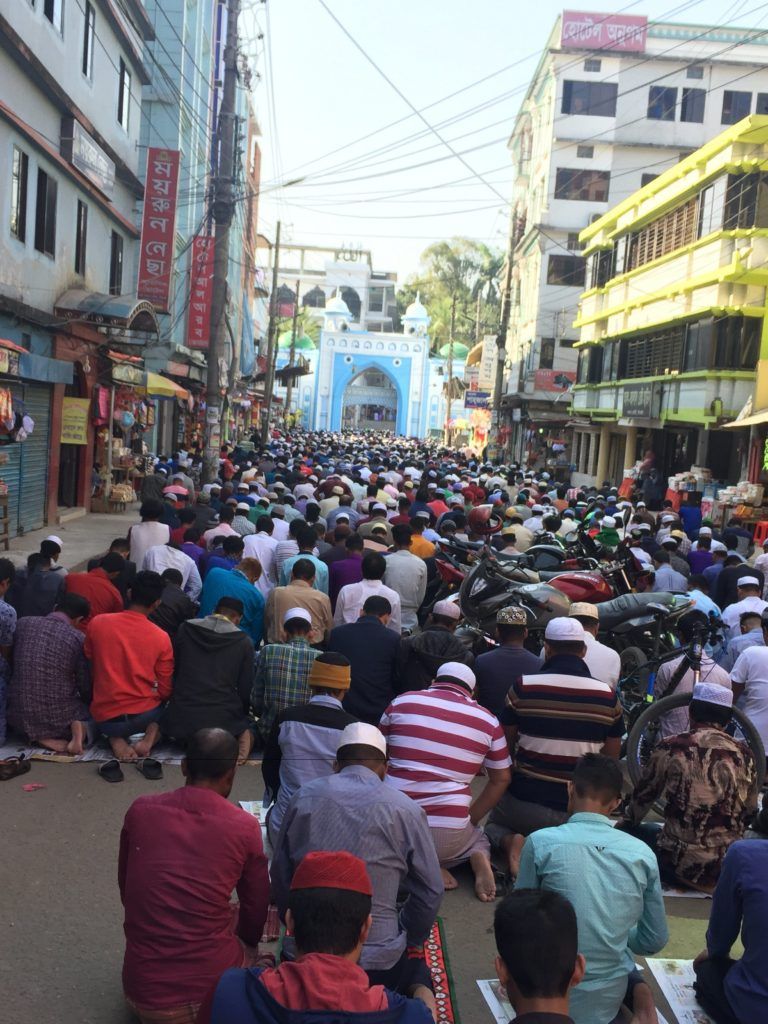
Prayers started; otherwise the street was totally silent. And then suddenly it was over, and the men rolled up their mats. Half the crowd turned to leave; the rest pushed forward, towards the mausoleum complex. I left my spot in the shop but quickly pressed myself up against a wall, away from the deluge of people sweeping down the street. Six police blowing whistles chased a group of men past. ‘It’s Bangladesh security’ said the man standing next to me, when I asked him why the police were….policing so vigorously. Pushy crowds are intimidating and well worth avoiding in most places, so I ducked back into the shop and waited for the street to quiet down a bit.
The mausoleum complex contains a mosque. The enshrined tomb is draped in brocade and candlelit and apparently a magical sight. I wouldn’t know, it’s off limits to women. Not to be outdone by any other dead saint, the Shah has a pond filled with sacred catfish (available for feeding by pilgrims).
Close to Sylhet there’s a much smaller town called Srimangal. I went there by train, and moved into the Tea Town Rest House hotel. Srimangal has several mostly tea-related claims to fame. Probably my hotel isn’t one of them, but it’s comfortable and quiet enough, when the hallboy isn’t singing (into a loudspeaker, from the sound of it). He came into my room without knocking, to fluff the pillow on my bed – a real achievement since the pillow was a flat slab of foam – and then unleashed a choking cloud of toxic bug spray, pulled out his phone, and suggested we take a selfie.
I left the hotel and went for a drink (of tea) at the Nilkantha Tea Cabin. They don’t serve just any old cuppa: the Tea Cabin is world famous for its glass of multi-coloured multi-flavoured teas poured in rainbow layers, each one swirling on top of the last but never mixing together.
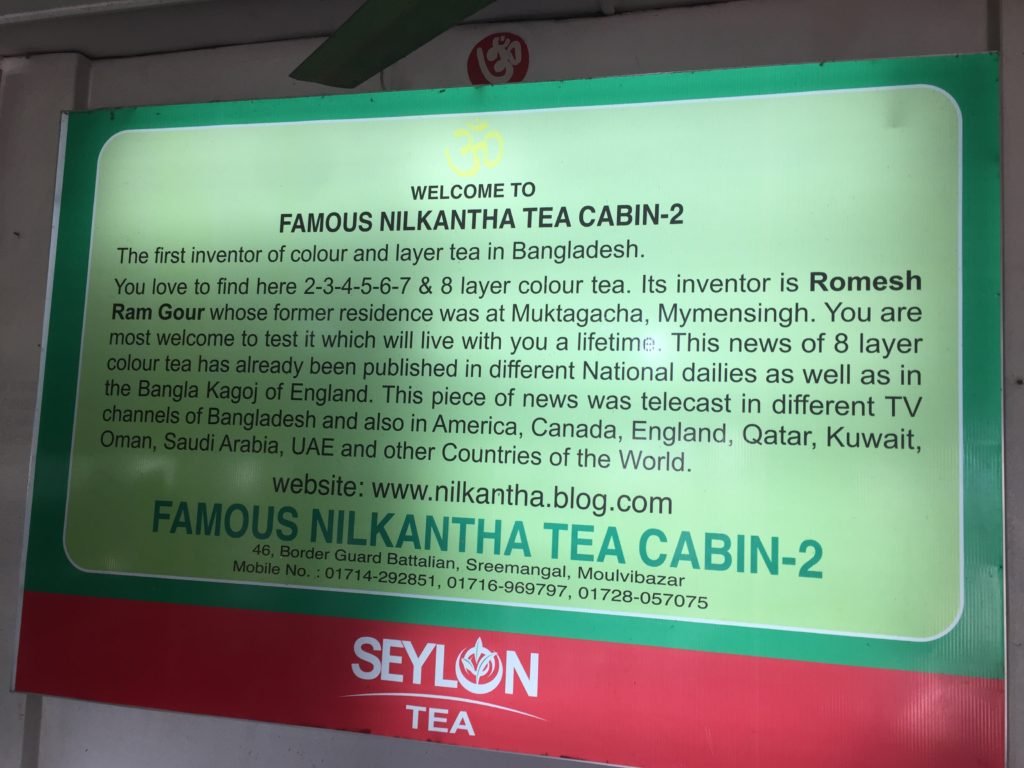
You can order a regular tea or a glass with up to 8 layers, for 10 taka (about 10 cents) a layer.
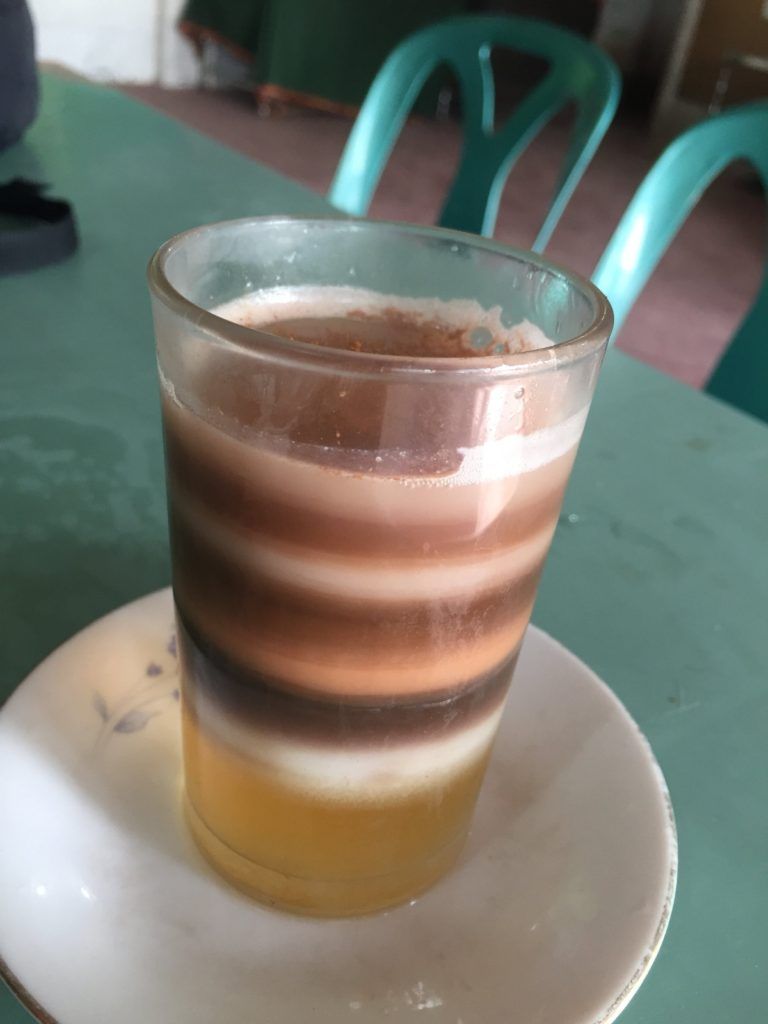
The tea was a bit sweet for me, especially the lemon layer which reminded me of those yellow suckers you get as a kid, but it’s apparently enough of a craze in Bangladesh to warrant knock-offs and copycats so that the creator keeps his recipe a strictly guarded secret.
Srimangal’s also got an incredibly busy marketplace. I’ve noticed that a lot of places in this country have a knack for feeling larger than life, probably thanks to the crowds of people everywhere. There is a lot of fish for sale in this market, and since it was pretty obvious I didn’t want to buy a huge eel, the vendors were all really nice to me and just suggested I take photos, constantly.
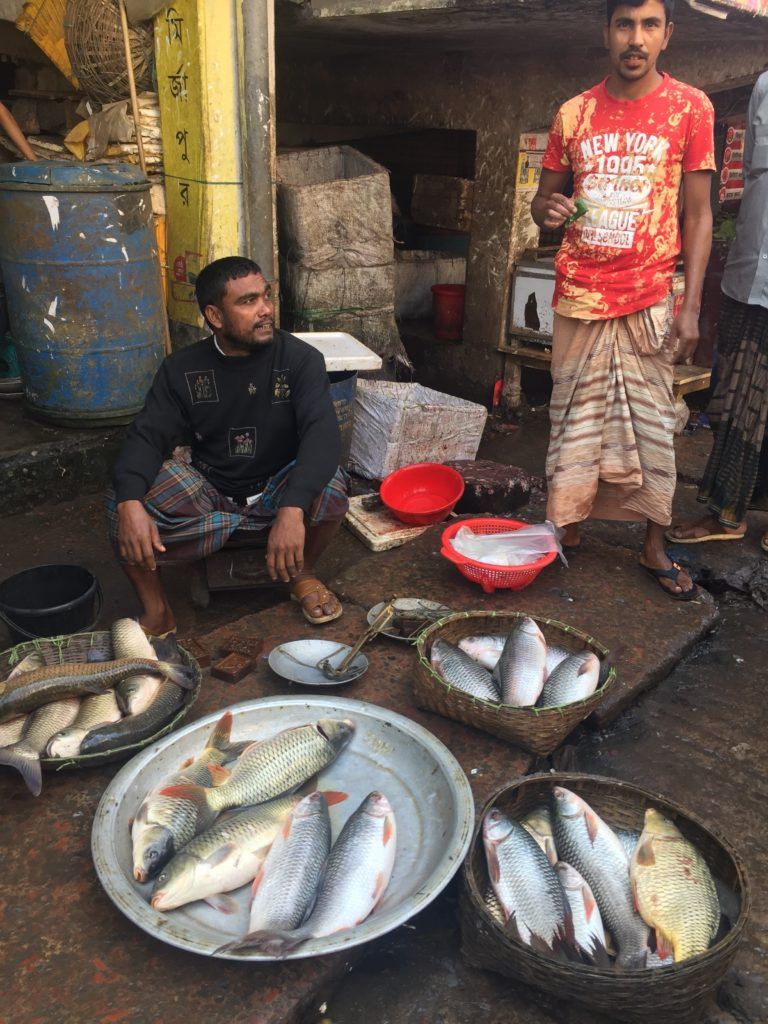
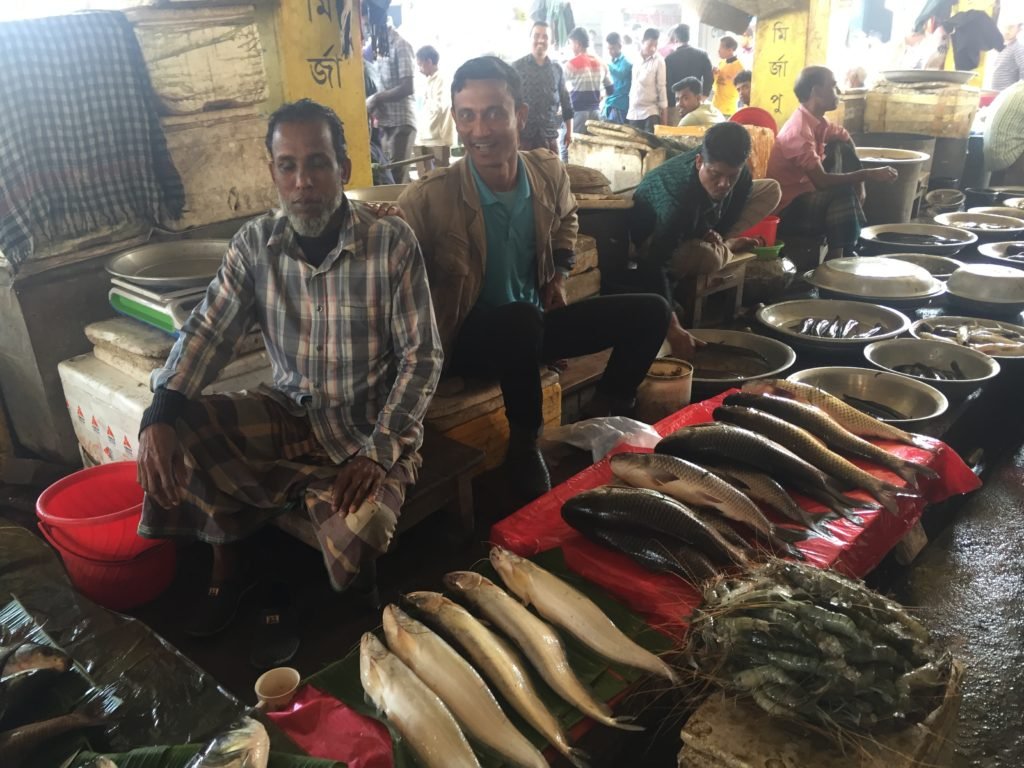
For a small town, you still have a really great chance of being run over in traffic.
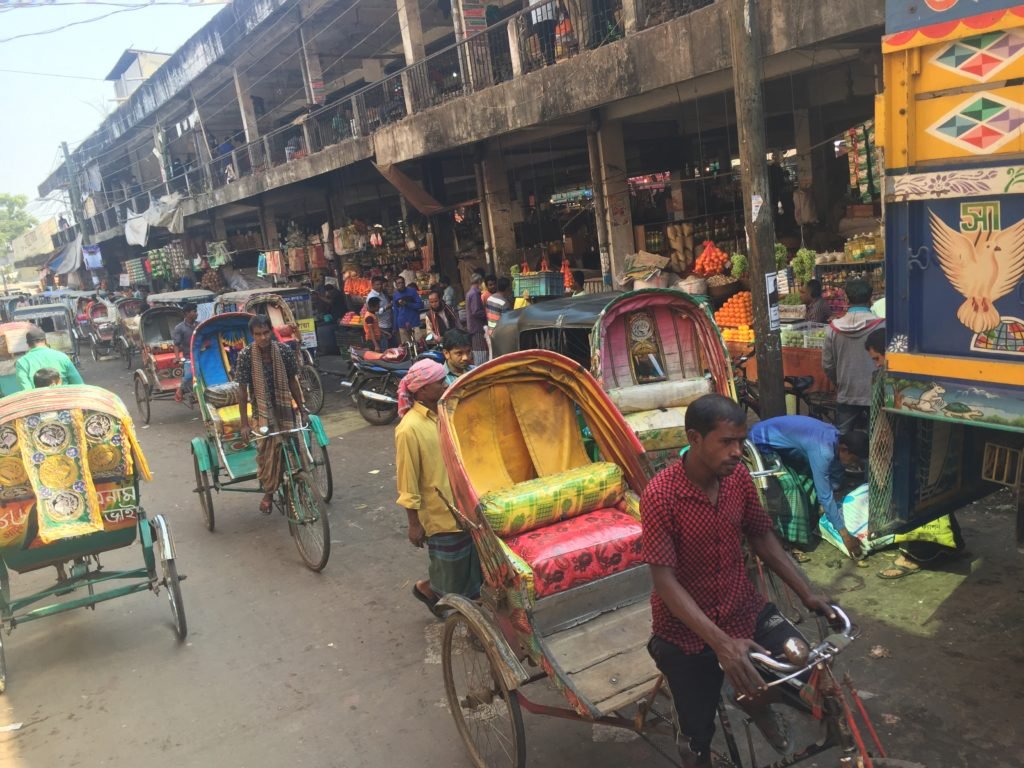
There is also a local zoo and it is unsurprisingly depressing – this is the sort of place where it’s still fine to keep a collection of wild animals in tiny cages in your backyard.
But from the hectic market and busy streets it’s just a short walk until you’re right out of town, meandering past tea plantations.
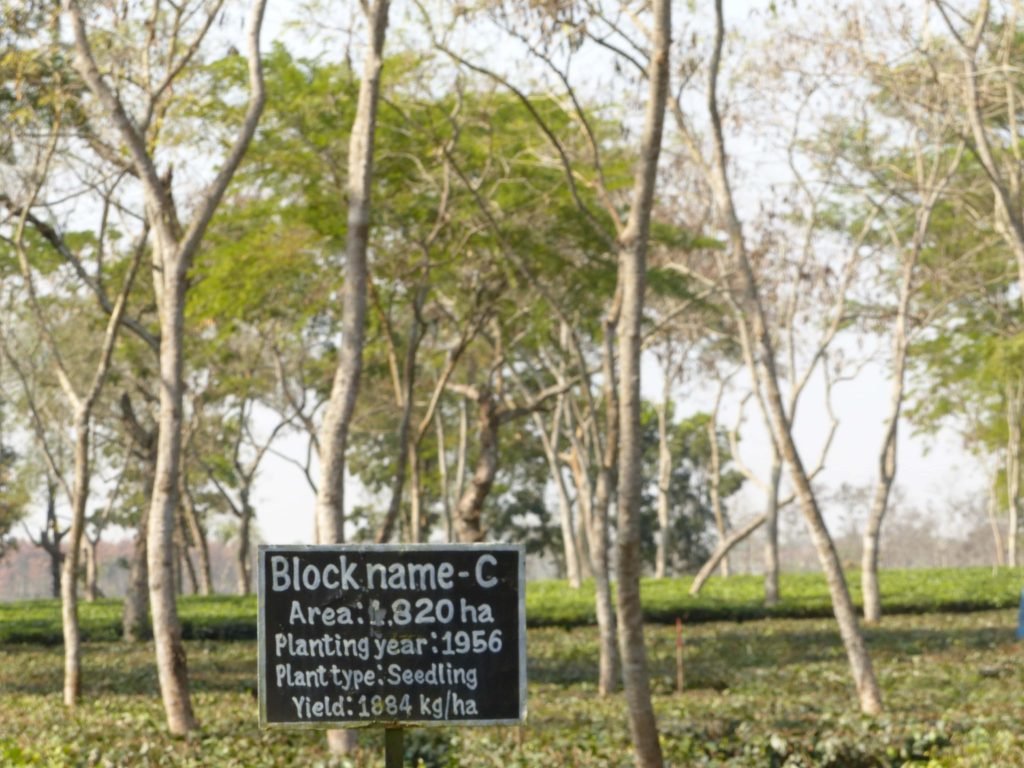
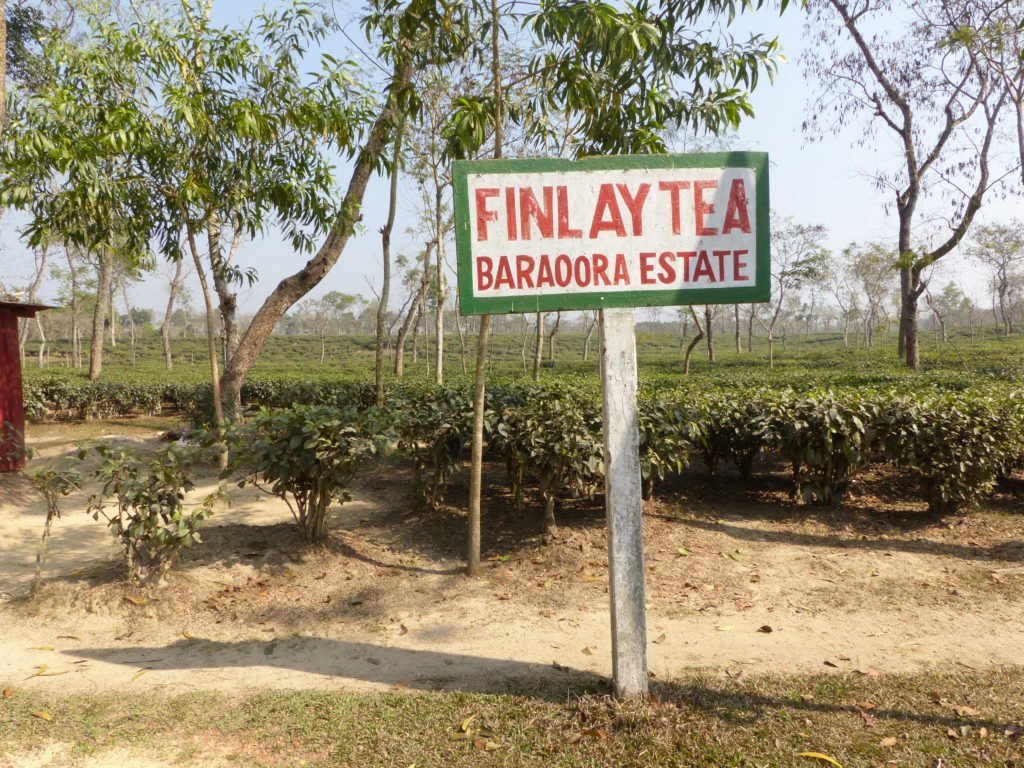
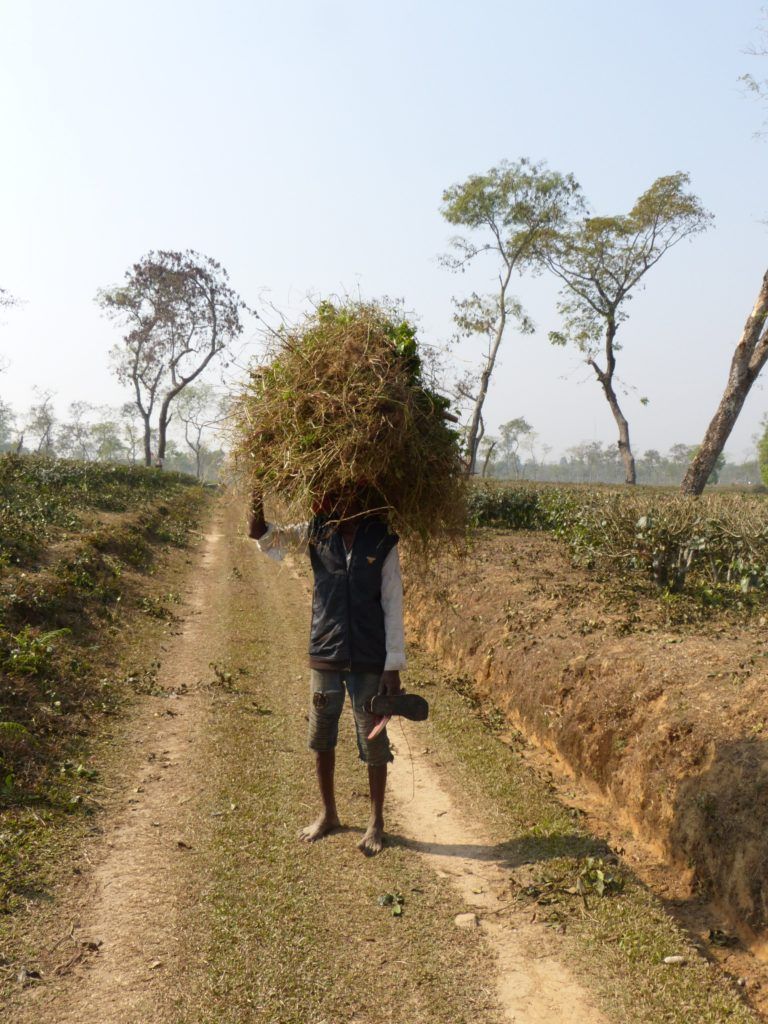
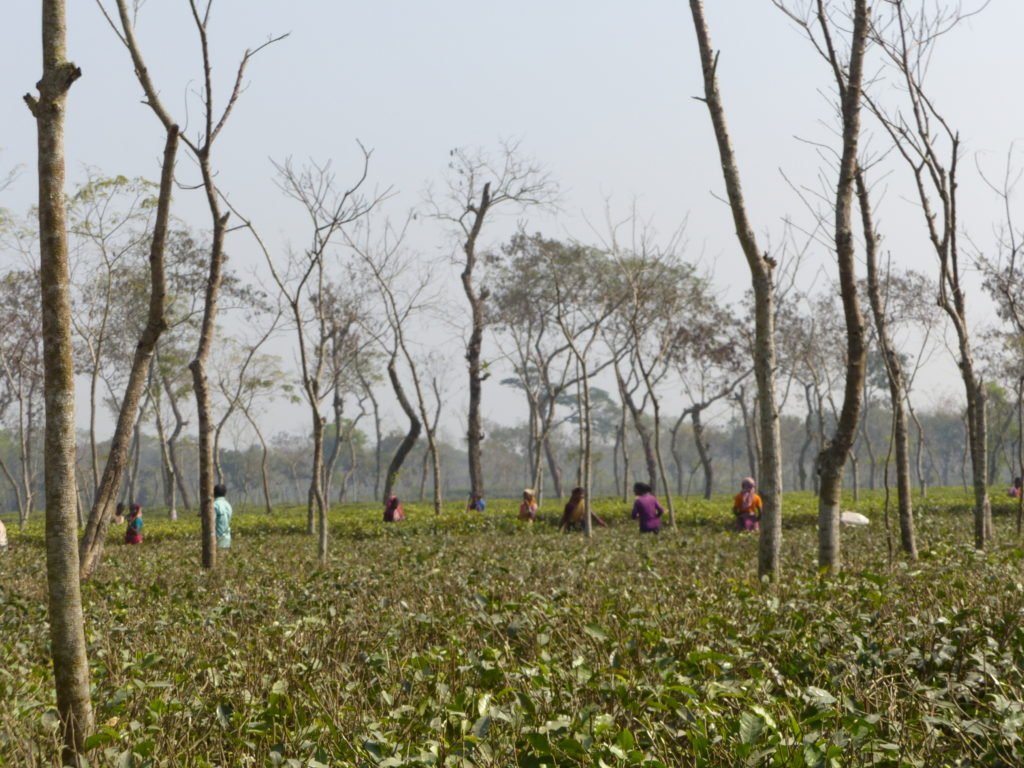
At this time of year the tea bushes are stripped nearly bare of leaves, but the workers are still at it – pruning branches for the next crop.
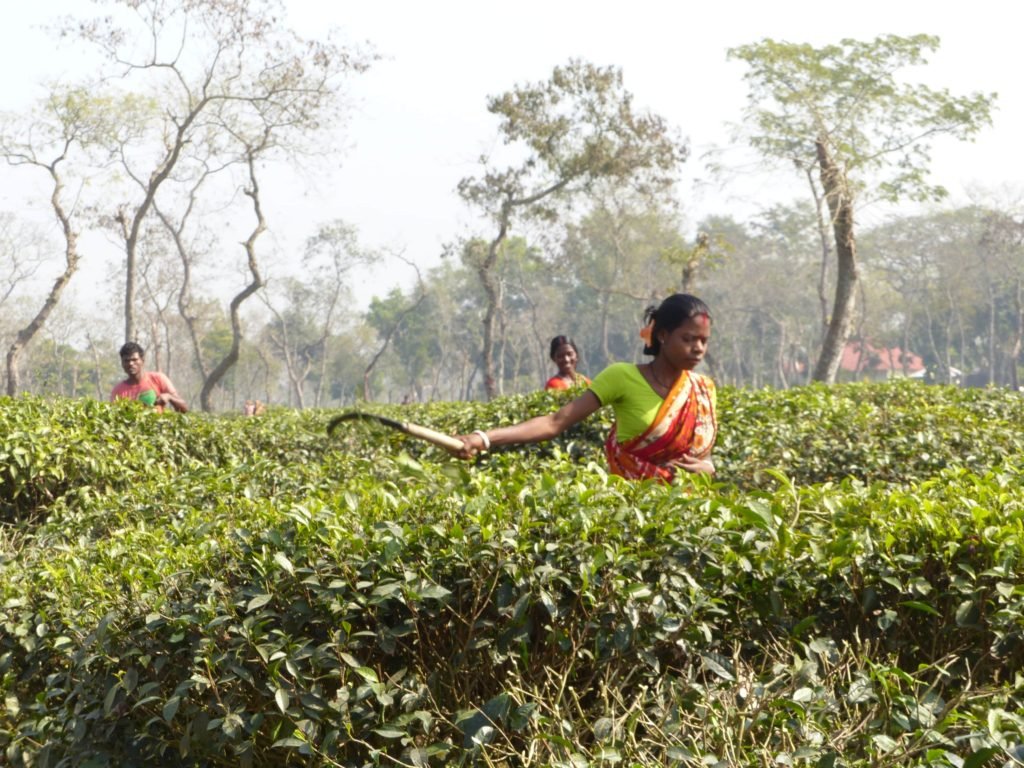
The workers are always at it, I learned when I went to a little museum. It’s basically a collection of random bits and pieces of machinery the British left behind.
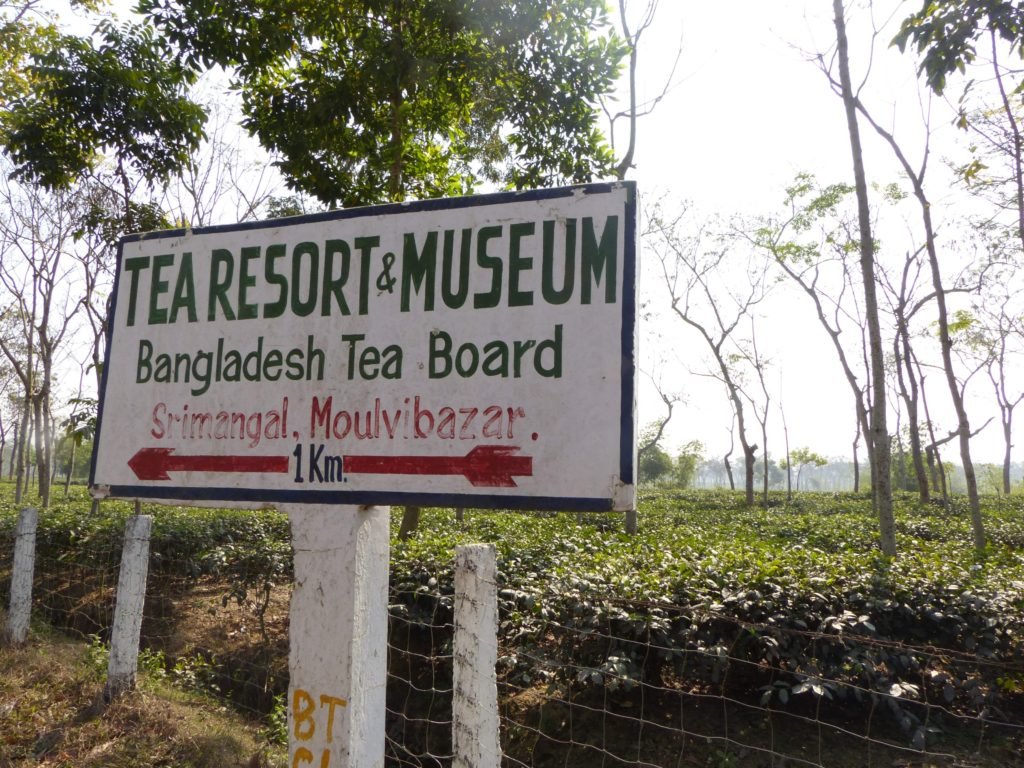
The manager showed me around and told me the women I’d just seen working in the fields earn about 100 taka a day (a little more than one USD), and they’re required to pick a quota: 23 kilograms of tea leaves. That’s a lot of tea, and it means they often have to bring their kids to work to help out.
I wandered through little villages strung out along the road behind the endless rows of tea bushes, past mosques, temples, schools, and drying laundry.
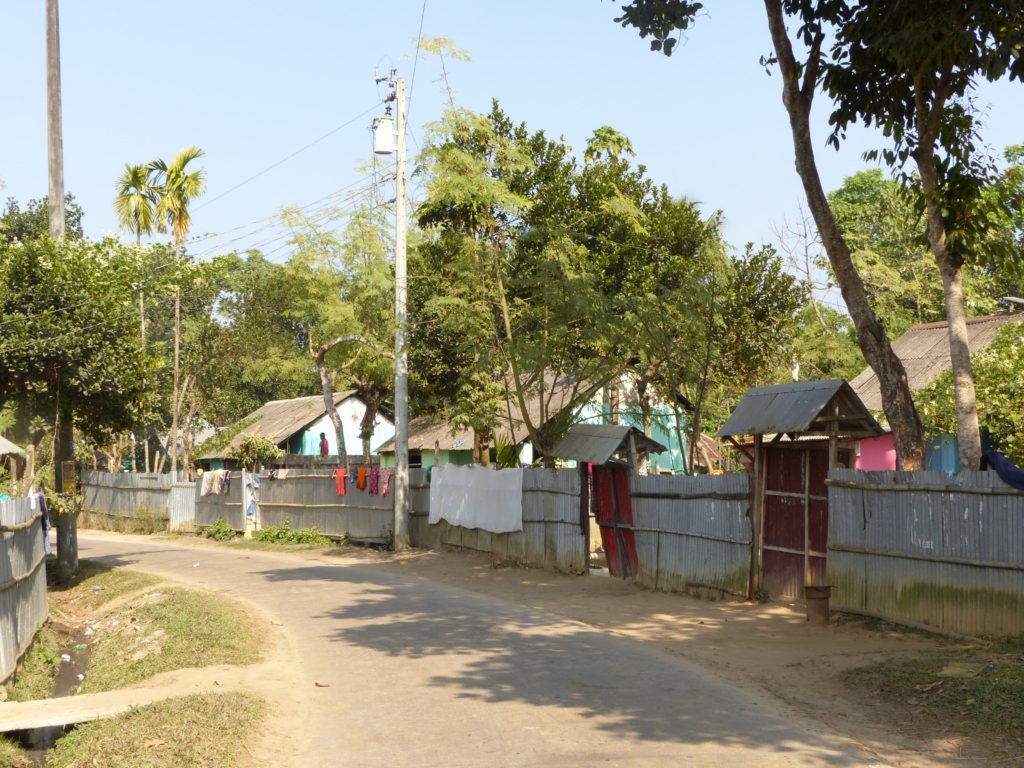
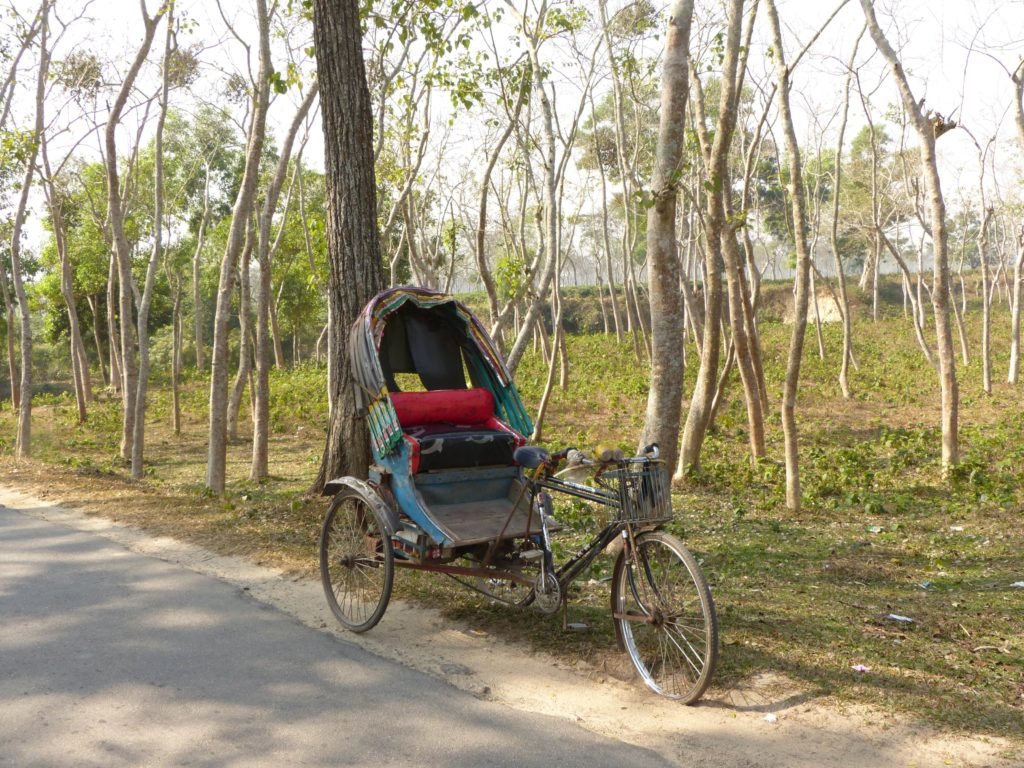
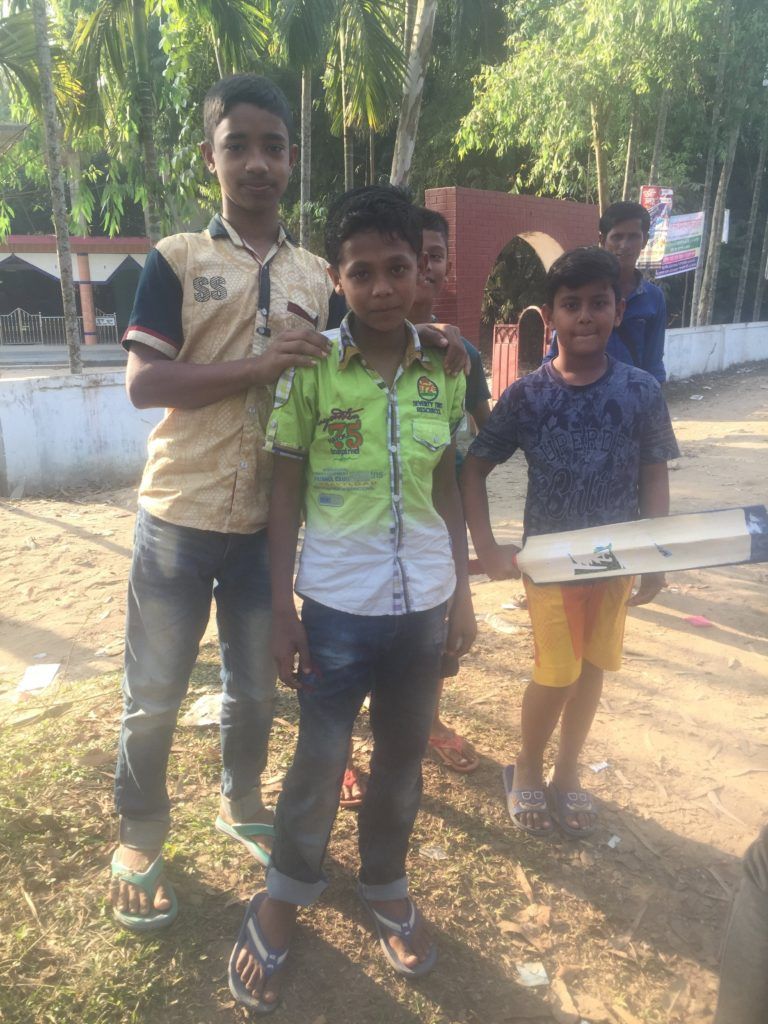
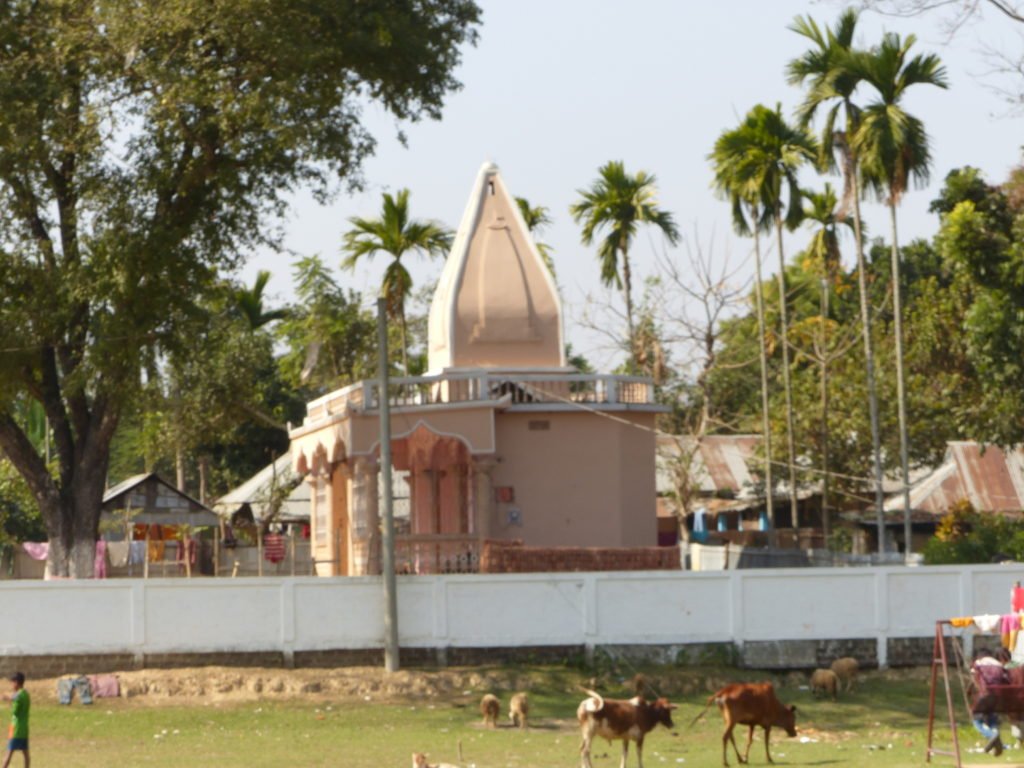
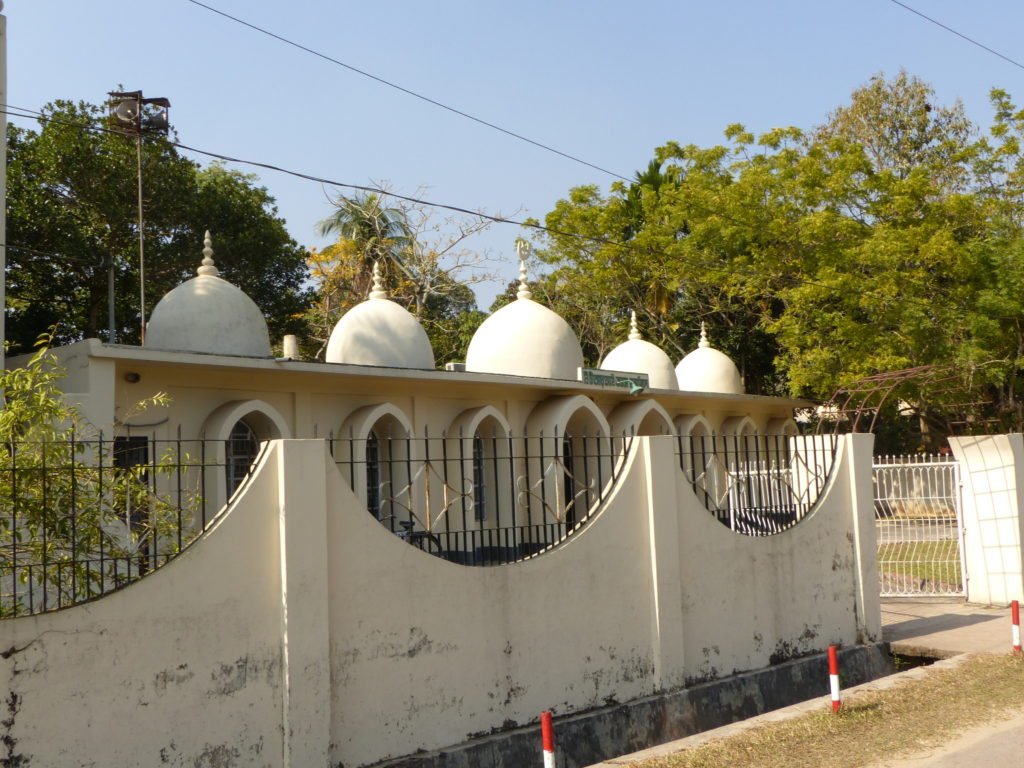
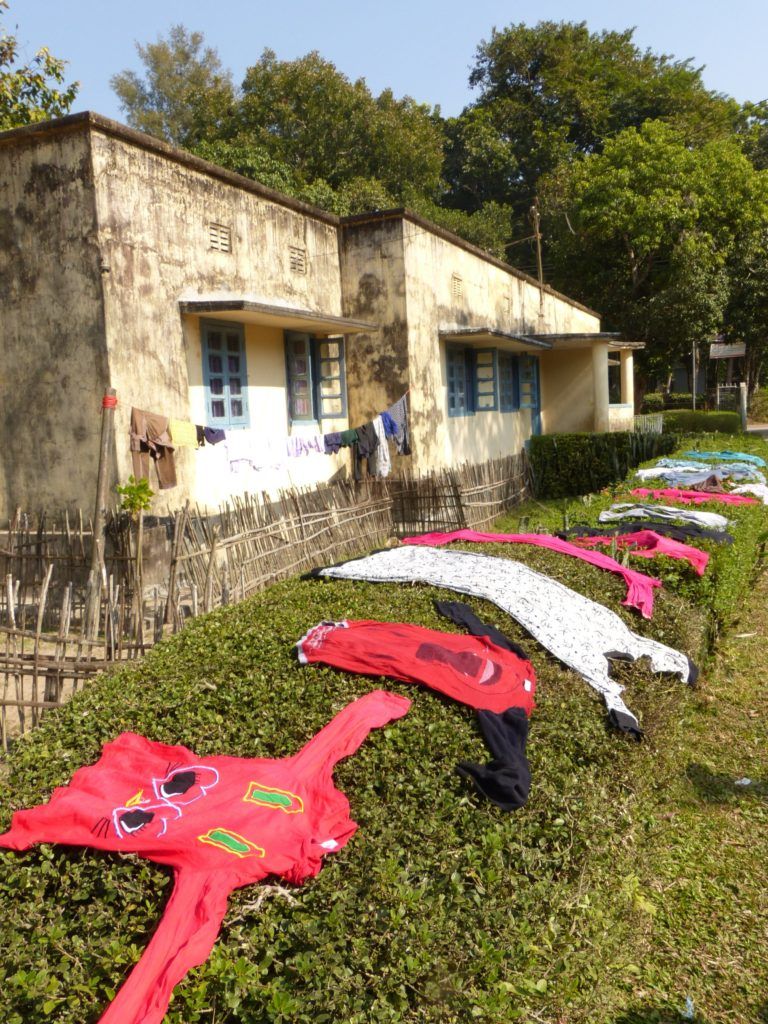
And, I spent a few hours walking the forest trails in Lawacharra National Park (yes, a train runs right through the park).
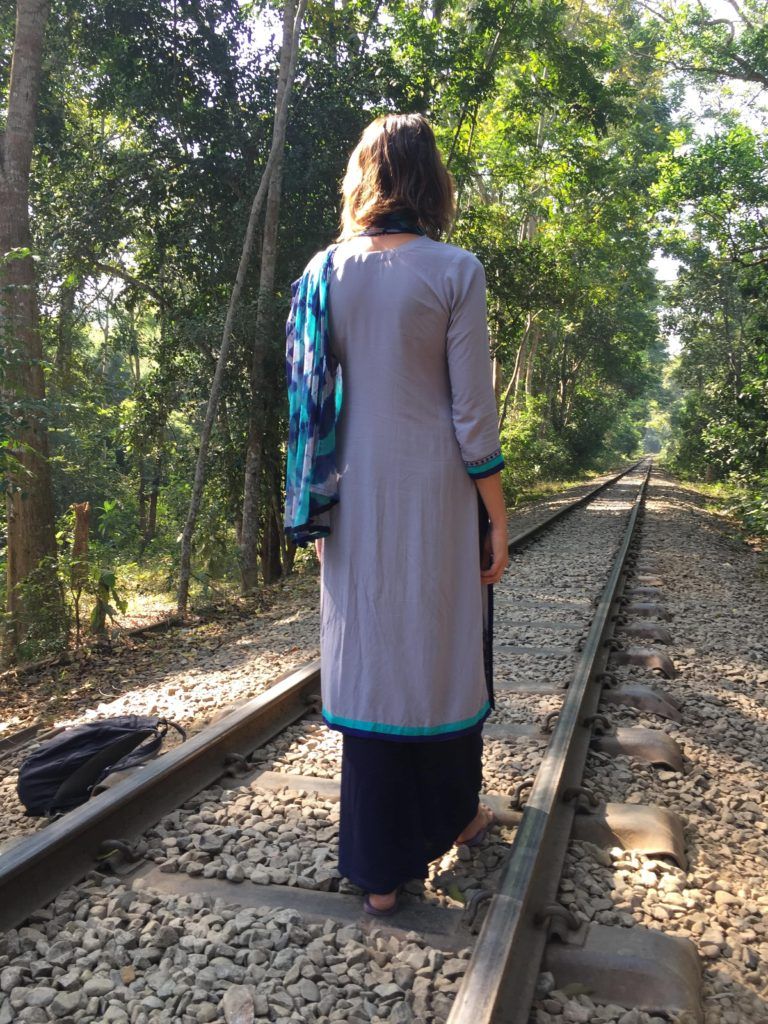
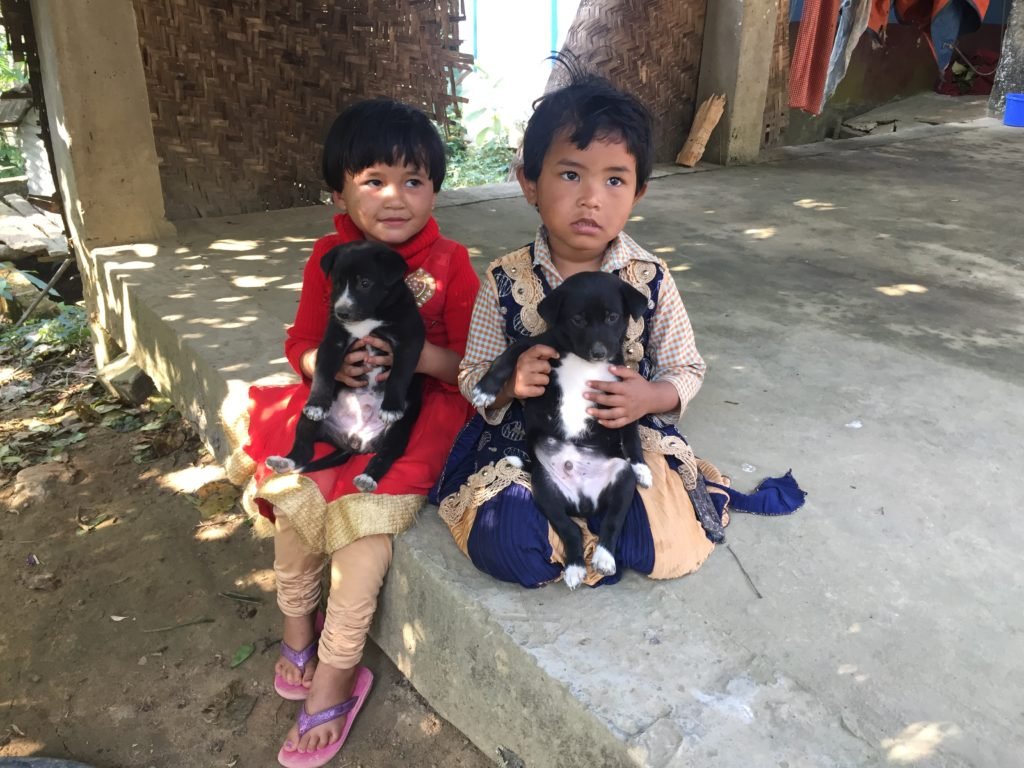
Of course, in busy Bangladesh I’m almost never all alone – even in the forest, or on a dusty country road – somebody wants a selfie.
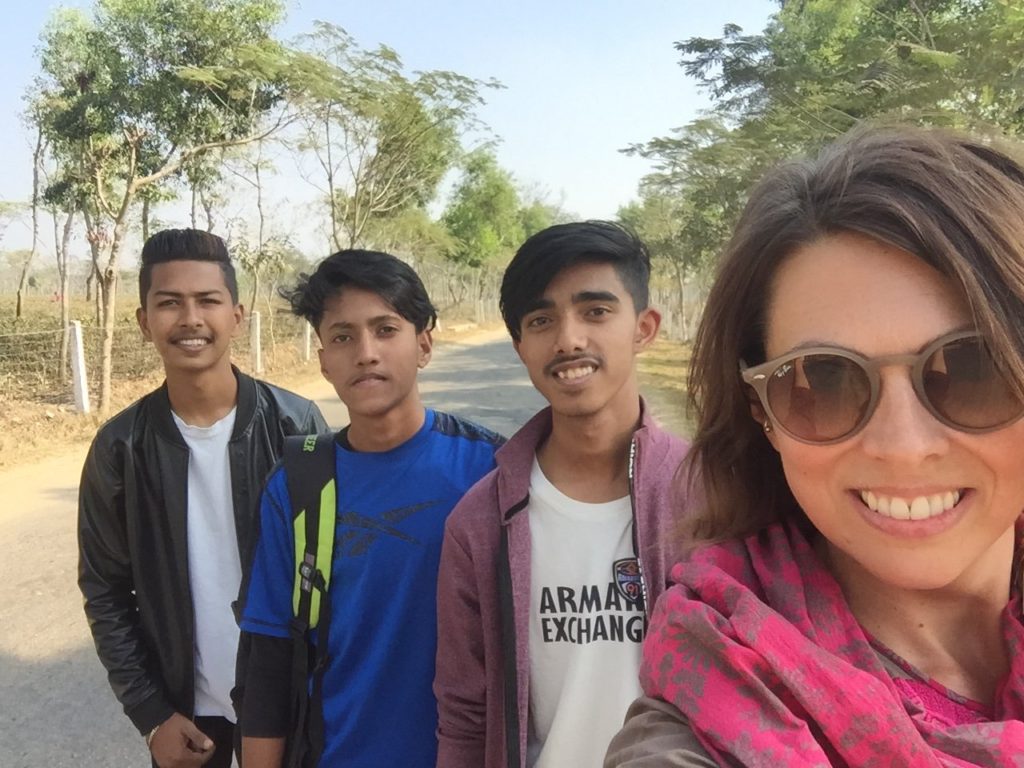
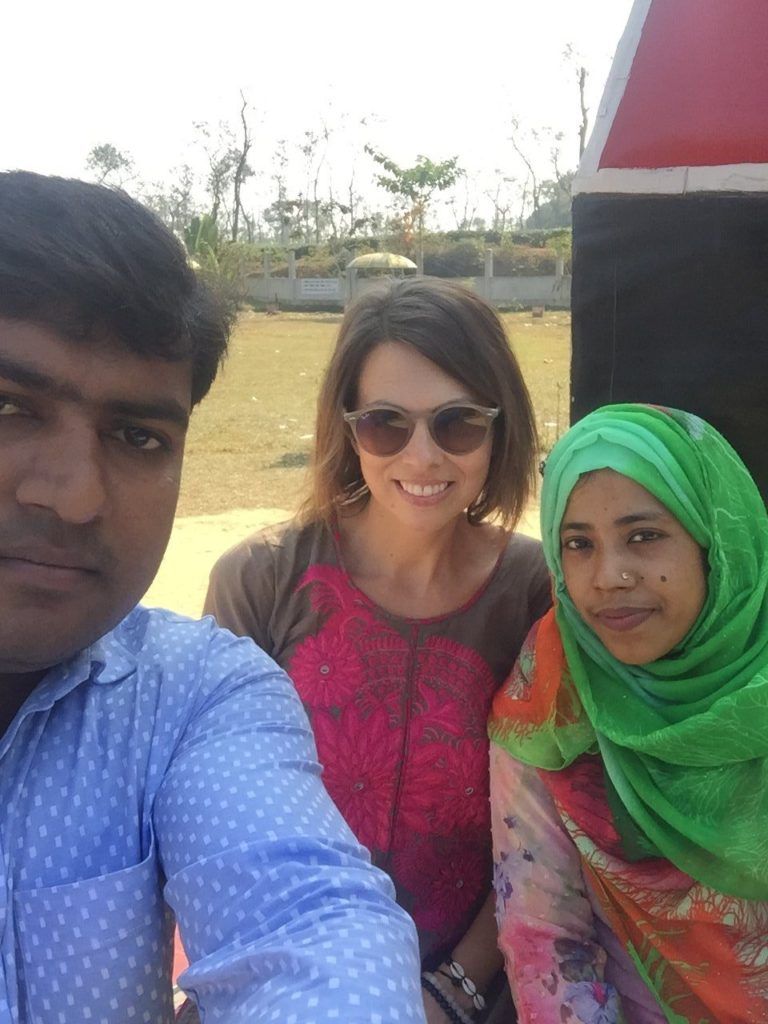
But I needed to return to Dhaka soon. And after that – I’d be moving on, to India. Glistening rice paddies, leafy green fields of tea; mosques and mausoleums; crowded markets and a million rickshaw rides; and yes, even (perhaps despite) the familiar refrain of ‘Selfie madam, selfie?’ – I knew I would miss Bangladesh.
Read More
For more of my adventures (and misadventures) in Bangladesh, check out the rest of my stories from the road.
